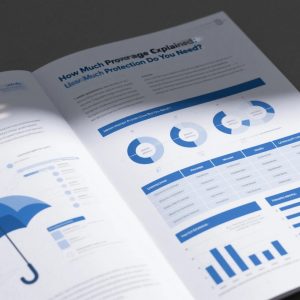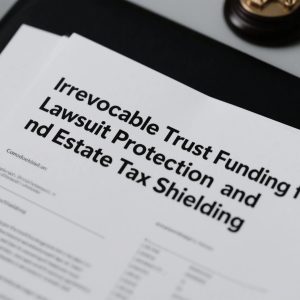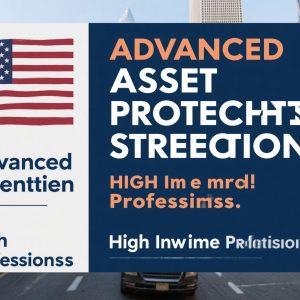The Growing Lawsuit Threat to Real Estate Portfolios
Real estate investors face unprecedented litigation risks in today’s legal environment, making robust real estate asset protection strategies essential for preserving wealth. From tenant injury claims to zoning disputes and contract lawsuits, property owners are targeted in approximately 42% of all civil litigation filed annually. The average slip-and-fall judgment now exceeds $1 million in many jurisdictions – enough to wipe out years of rental income and equity growth. Smart investors understand that proper LLC asset shielding must be implemented before any legal threats emerge, as courts routinely dismiss last-minute asset transfers as fraudulent conveyances.
The most successful investors treat protection planning as an integral part of their acquisition process rather than an afterthought. This proactive approach involves evaluating each property’s specific risks, implementing layered legal structures, and maintaining appropriate liability insurance for landlords that addresses both common and catastrophic exposures. The key is creating multiple barriers that force potential claimants to overcome several legal hurdles before reaching personal assets, dramatically reducing the likelihood of successful judgments.
Entity Structuring: The First Line of Defense
Proper entity formation represents the cornerstone of effective real estate asset protection. While many investors default to simple LLCs, sophisticated portfolios require more nuanced structuring. The gold standard involves creating separate single-asset LLCs for each property, owned by a holding LLC that in turn may be owned by a trust. This creates three distinct legal barriers a claimant must penetrate: the operating LLC’s liability protection, the holding company’s additional layer, and the trust’s asset protection provisions.
The LLC asset shielding strategy works best when implemented with precision. Each LLC should have its own bank accounts, operating agreements, and recordkeeping systems to prevent “piercing the corporate veil.” Charging order protection provisions in operating agreements prevent creditors from seizing LLC interests directly. Some investors further enhance protection by forming LLCs in jurisdictions like Wyoming or Delaware that offer particularly strong creditor protection statutes, then registering them as foreign entities in the property’s state.
Insurance Solutions That Actually Protect
Even the best legal structures require complementary liability insurance for landlords to handle smaller claims and legal defense costs. However, most investors dangerously underinsure their properties or purchase generic policies riddled with exclusions. Adequate coverage should include:
• $2M+ umbrella policies extending over underlying coverage
• Water damage endorsements for mold-related claims
• Loss of rents coverage during litigation periods
• Defense costs outside policy limits provisions
• Specific exclusions review for local risks (e.g., swimming pools)
These risk mitigation for property owners strategies ensure liquidity when needed most. The most comprehensive plans layer general liability policies with excess coverage and specialized products like environmental liability insurance for contaminated properties or terrorism coverage for high-profile buildings.
Creative Financing Structures That Reduce Exposure
Savvy investors incorporate asset risk management directly into their financing strategies. Rather than traditional mortgages requiring personal guarantees, consider:
• Non-recourse loans that limit lender claims to the collateral property
• Seller financing with negotiated liability limitations
• Private money partnerships where lenders become equity participants
• Syndication structures spreading risk across multiple investors
Each approach reduces personal exposure while maintaining acquisition capacity. For larger portfolios, cross-collateralization clauses should be avoided or carefully negotiated to prevent a single lawsuit from jeopardizing multiple properties through loan acceleration clauses.
Tenant Management Protocols That Prevent Lawsuits
The best real estate asset protection strategy prevents lawsuits before they occur through rigorous tenant management systems. This includes:
• Comprehensive screening processes with background/credit checks
• Digitized lease agreements with clear liability limitations
• Regular property inspections documenting maintenance
• Incident reporting systems for near-misses
• Tenant education on proper maintenance responsibilities
These risk mitigation for property owners tactics create both legal defenses and deterrence. Well-documented properties with professional management attract better tenants and discourage frivolous claims. Many insurers offer premium discounts for investors implementing recognized risk management protocols.
Homestead and Exemption Strategies
While primary residences enjoy strong homestead protections in many states, investors can extend similar LLC asset shielding concepts to investment properties through:
• Tenancy by the entirety ownership in marriage-friendly states
• State-specific exemptions for certain equity amounts
• Retirement account ownership of properties where allowed
• Annuities or life insurance products with creditor-protected cash values
The most aggressive (but legal) strategies involve converting non-exempt equity into exempt forms through carefully structured transactions. For example, using cash-out refinancing proceeds to fund protected retirement accounts or paying down primary residence mortgages. These techniques require careful timing to avoid fraudulent transfer claims.

Defensive Title Holding Techniques
Creative title arrangements can enhance asset risk management without alerting potential claimants. Consider:
• Land trusts with anonymous beneficiary designations
• Corporate nominee arrangements hiding ownership trails
• Deed recording strategies that minimize public exposure
• Equity stripping through properly documented loans
These methods don’t violate fraudulent transfer laws when implemented proactively but make it significantly harder for contingency-fee attorneys to identify deep pockets worth suing. Many plaintiffs’ attorneys screen potential defendants by running simple property records searches – creative titling can keep your portfolio off their radar.
Judgment-Proofing Strategies for High-Risk Properties
Certain property types (bars, nightclubs, industrial sites) require specialized liability insurance for landlords and additional protections:
• Captive insurance arrangements for uninsurable risks
• Bankruptcy-remote special purpose entities
• Foreign asset protection trusts as ultimate owners
• Judicious use of statutory liability limitations
For particularly high-risk assets, some investors employ “reverse piercing” strategies where the property becomes essentially judgment-proof while maintaining cash flow. This might involve layered ownership through protected retirement accounts, charitable foundations, or other difficult-to-attack structures.
Litigation Response Protocols
Even with perfect real estate asset protection, lawsuits sometimes occur. Prepared investors have response plans including:
• Pre-vetted landlord defense attorneys on retainer
• Document preservation systems for key evidence
• Insurance claim filing procedures
• Media response protocols for high-profile cases
• Settlement authority guidelines for property managers
These risk mitigation for property owners measures prevent panic decisions that could undermine long-term protections. Many catastrophic losses occur not from the initial claim but from poorly handled legal responses that create additional exposure.
State-Specific Considerations
The effectiveness of various LLC asset shielding strategies varies dramatically by jurisdiction:
• Texas/Florida: Strong homestead protections but weaker LLC charging order rules
• Wyoming/Delaware: Excellent LLC protections but no homestead benefits
• California: Weak overall protections but community property advantages
• Alaska/South Dakota: Leading trust protectorate states
Savvy investors often establish entities in protective jurisdictions while complying with local registration requirements. Some even relocate primary residences to states with unlimited homestead exemptions when managing large portfolios.
Tax-Efficient Protection Strategies
The best asset risk management plans coordinate with tax planning through:
• Cost segregation studies freeing up cash for insurance premiums
• Opportunity zone investments providing both deferrals and protection
• 1031 exchange proceeds held in protected intermediaries
• Charitable remainder trusts for appreciated properties
These strategies demonstrate that asset protection and tax efficiency aren’t mutually exclusive goals. Properly structured, protected entities can generate significant tax advantages while reducing litigation risks.
When to Implement Protection Strategies
The ideal timeline for real estate asset protection follows:
1. Entity setup before property acquisition
2. Insurance binding simultaneous with closing
3. Financing structured to limit guarantees
4. Ongoing maintenance of corporate formalities
5. Annual reviews adjusting for portfolio growth
Investors who wait until after purchasing properties or (worse) after receiving lawsuit threats face significantly limited options. The courts increasingly view last-minute asset transfers with skepticism, often reversing them as fraudulent conveyances.
Conclusion: Comprehensive Protection for Peace of Mind
Successful real estate investors treat risk mitigation for property owners as seriously as they do property selection and financing. By combining proper entity structures, adequate insurance coverage, creative financing, and proactive management, you can build a portfolio that generates wealth without exposing your entire net worth to potential claimants.
Remember that LLC asset shielding and other protective measures work best when implemented early and maintained consistently. The small upfront costs of proper structuring pale in comparison to the potential losses from a single uninsured judgment. In today’s litigious environment, comprehensive asset protection isn’t just wise – it’s essential for any serious real estate investor.





